
|
|
|
HAVAN

Havan, also called Homa, or Agnihotra, is a ritual in which offerings to the Deity are burnt in the Sacred Fire along with chantings of mantras. Mantras can be declaimed aloud or recited internally, while the invocation Svaha is recited at the end of each mantra while doing the offer.
Havan Kund is the center place of this ritual, in which the fire is put on and where ghee, rice, dried fruits, herbs, dhoop and fragrant resins, and other items are offered to the fire.
Sacred Fire is the central and immutable element of each Havan, but procedures and items offered to the fire vary greatly.
There are also many traditions that have adopted this ritual, from the Vedic to the Tantric, from the Buddhist traditions to Jainism. Interestingly, the fire ritual is an ancient and universal practice, and although with procedures very different from each other, the men always worships the gods into the fire.
Sensory objects (Panchamatras) comprise of Sabda (sound), Sparsa (touch), Rūpa (form), Rasā Taste and Gandha (taste) are prevalent in human nature. There are 24 Tatvas (attributes) embedded within us comprising of 5 elements of nature in the form of Earth, Water, Fire, Ether and Space.
Lord Paraśurāma propounded in his work called Paraśurāma Kalpa Sūtra stressing the need to harmoniously balance the 5 natural elements in order to attune with our true nature of divinity which has been forgotten. He emphasizes that Fire is the only element which rises upwards burning and consuming all that is in contact with it and residue left in its purest and divine form.
Why Homa
Many Hindu rituals involve invoking the divine presence in an idol or in a vase (Kalaśa). Unfortunately in the Kali Yuga the elements of earth, water and air are not pure. If there are impurities at the time when the idol or vessel has been made they can heavily limit the divine presence that the idol can accommodate.
The only elements that can not be polluted are Ākāśa (space / ether) and Agni (fire). It is very difficult to do spiritual sadhana through the medium of space. So the best way to do sadhana is fire.
One of the Sanskrit words for "fire" is "Pāvaka", which means "one who purifies". Fire is pure and purifies everything that comes into contact with it.
Measures of Homa
Kundam
The minimum bid (Svāhā) for any Homa Kundam is 1.001 Svāhā for each occupied
side. But each Homa Kundam has a limit of Svāhā which depends on the surface of
the Kundam.
For example, an
Ardhahasta Homa Kundam that is equivalent to 12 square inches can receive no
more than 10,000 Svaka.
12in² (77.42cm²) - max. 10,000 Svāhā
24in² (154.8cm²) - max. 100,000 Svāhā
48in² (309.7cm²) - max. 1.000.000 Svāhā
96in² (619.4cm²) - 1,000.001 Svāhā to the infinite
Vedika Dakshinamarga
Homa Kundam (or Dhuni) must be with three planes (Maykala Traim)
Tantrika
The Homa Kundam (or Dhuni) must be with a single plane (Maykala), and there must
be Kantha (throat), Nabi (navel) and Yoni (vagina).
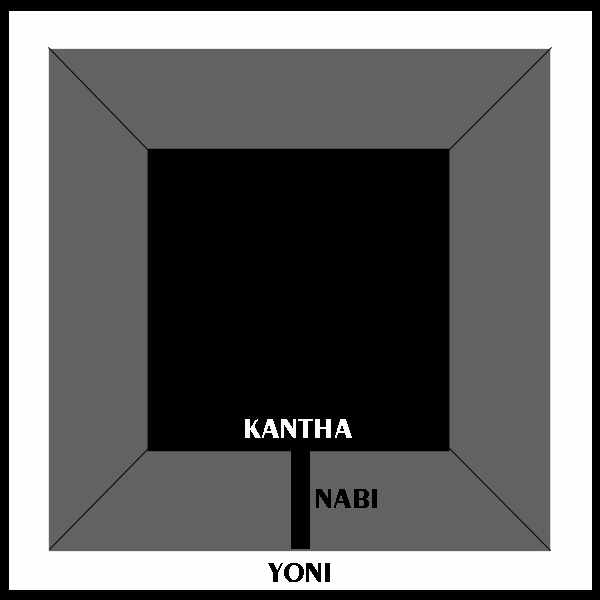
If you are in more people put a Yoni on each side occupied.
Before starting the Homa put a flower on Yoni.
Different form of Havan Kund and their tantric use
Square
The most common of the Homakundam.
The square form is used in Tantra to pacify
divinity, or to pacify the evil influences of spirits or planets, to cure
diseases.
To bring peace to the world.
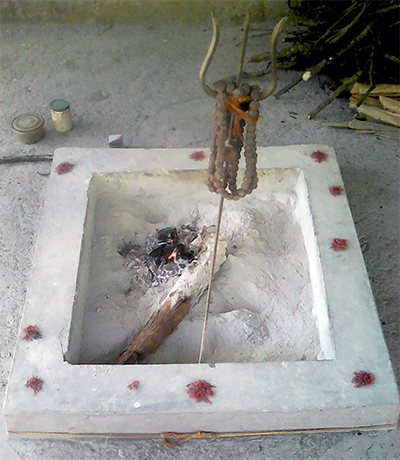
Circle
Used to distract and keep an enemy or evil spirits
away from home.

Triangle
Used to attract and control someone or something. For example, an enemy, a lover, but also a spirit or a deity.
Pentagon
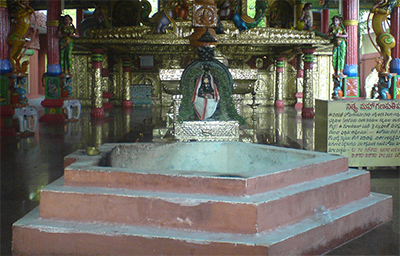
Hexagon
Used to invoke and establish a deity.
They can be used to stop an event, to paralyze an enemy or prevent an attack.
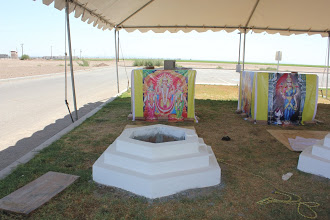
Octagon
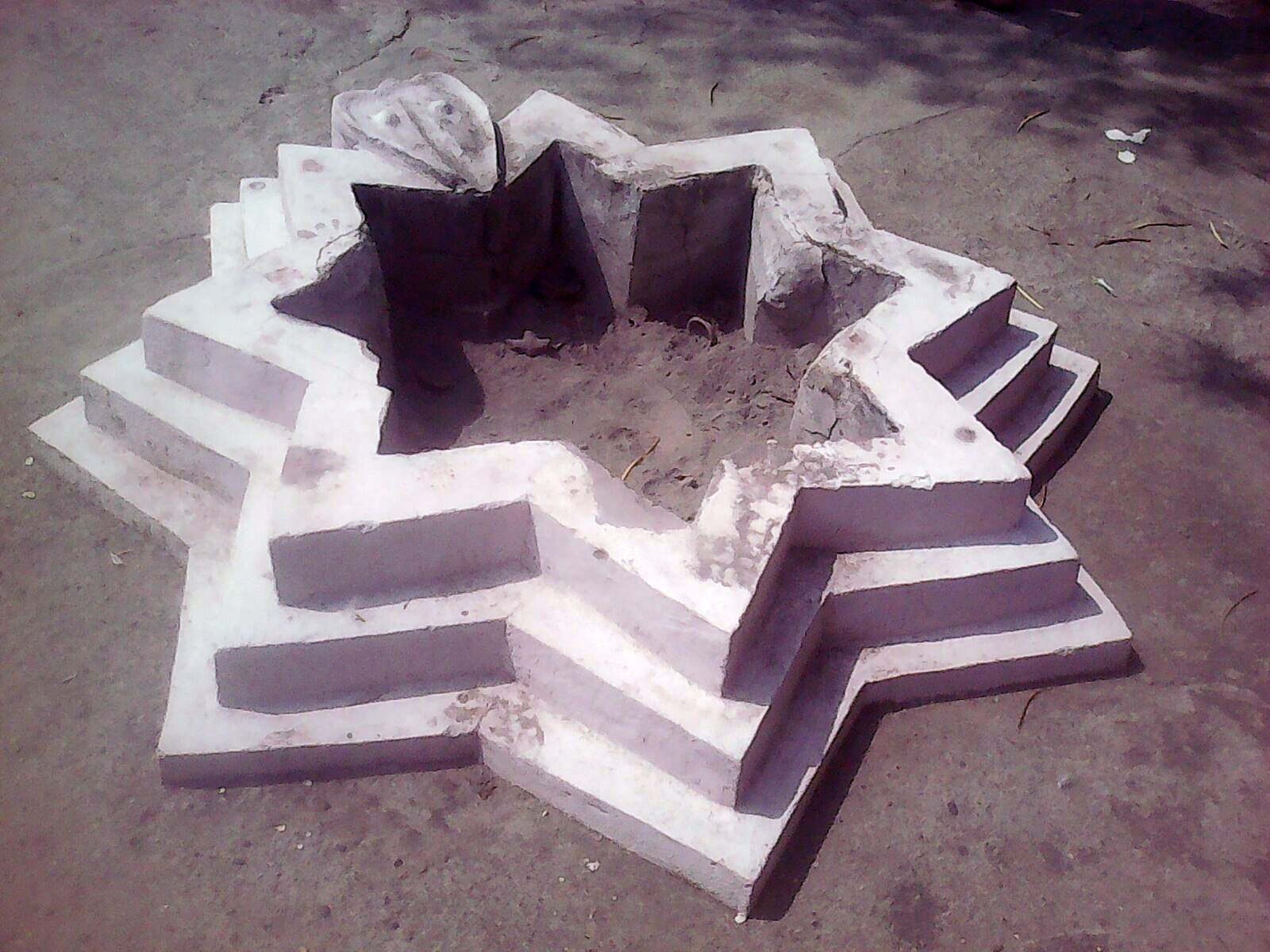
Semicircle
Used to keep someone or something under control.
For example, an enemy, a lover, but also a spirit
or a deity.
Or on themselves to get all the siddhi.
Lotus
Used for personal applications.
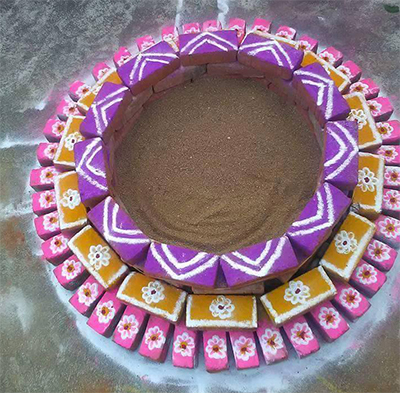
Yoni
Used to have children.
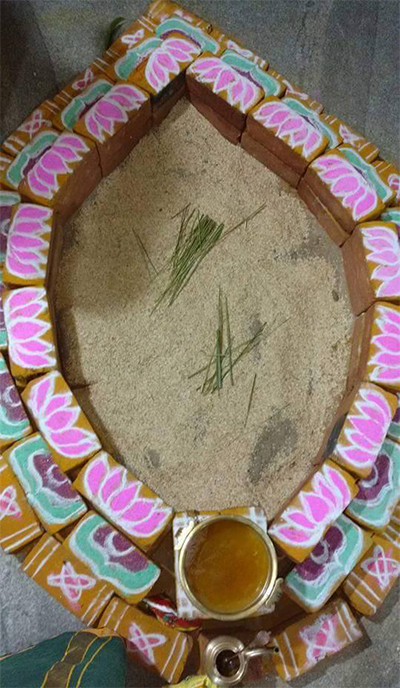
Here a list of the most popular Homam:
Ayushya Homa: for a long life, or to ward off evil influences present in a child’s life immediately following its birth, thereby ensuring longevity
Chandi Homa: for Victory in all endeavors
Dhanvantari Homa: for good health
Durga Homa: to cancel negative energies; for self-confidence
Ganapati Homa: to overcome obstacles
Gayatri Homa: to facilitate positive thinking and subsequently performing good karma
Kritya Pariharana: to counter the effects of black magic
Lakshmi Kubera Homa: for wealth and material prosperity
Mahadevi Homa: for the stimulation of a marriage and for marital felicity among those already married
Mangala Samskarana Homa: to celebrate auspicious events; to attain Moksha
Mrityunjaya Homa: for ward off life threatening situations like accidents and ensure longetivity of life
Navagraha Homa: to appease the Nine planets and limit the evil influences in one’s horoscope
Punyahavachana Homa: for the naming of a child
Rudra Homa: getting rid of all negative influences
Santhana Gopala Homa: for blessings for a Child
Sudarshana Homa: for success in an undertaking
Thila Homa: Homam performed for ancestral and those who died unnaturally. It is performed only once in life time preferably at Rameswaram / Thrupullani (Sethu Karai)
Vastu Homa: to encourage good Vastu (energy in buildings)
Vidya Homa: to benefit students; to facilitate learning
Viraja Homa: purification rites performed as part of the formal ceremonies by which a person takes the vows of renunciation (Sannyas), thereby becoming a Sannyasi (monk)
Vishwa Shanti Homa: for universal peace and harmony, as also harmony between the self and the universe
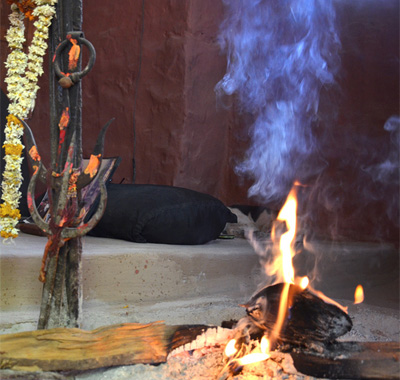
Chandi Homam
Chandi is like a road roller. She creates a path if there is none, moves slumber to action, gives inspirations and holds hands till the end. She is Mahakali, Mahalakshmi and Mahasarasvati, all in one.
Chandi Homam is a worship of Goddes Durga as the Mother of the Universe (it is considered an amalgamation of three deities, namely, Maha Kali, Maha Lakshmi and Maha Sarasvati).
The purpose of the Chandi Homam is to remove any obstacles or blockages in growth – both internally and externally – for a person or a group of people. Chandi Homa is very useful for getting success, wealth, prosperity, fame, removal of fear, health, longevity, fulfilling of desires, food, progeny, strength, removing ailments, removing danger etc.
Benefits of Chandi Homam
Achieving success in all endeavors: examination, job, etc.
Success in business ventures and professions and to overcome problems in business.
Attainment of health and longevity, curing physical disabilities, severe infliction’s and mental disorder.
Begetting progeny (children) and also preventing deformities and pregnancy related problems.
Accomplishment in performing arts.
To ward off malevolent planetary influences and ill effects of sorcery and witchcraft.
To resolve Jathaka Dosha and Vastu Dosha.
Performing this Homa once a year, bestows you with the power and supremacy to fulfill and accomplish success in your life span.
Agni Vidhi - Dharba Grass - Chandi Homam
